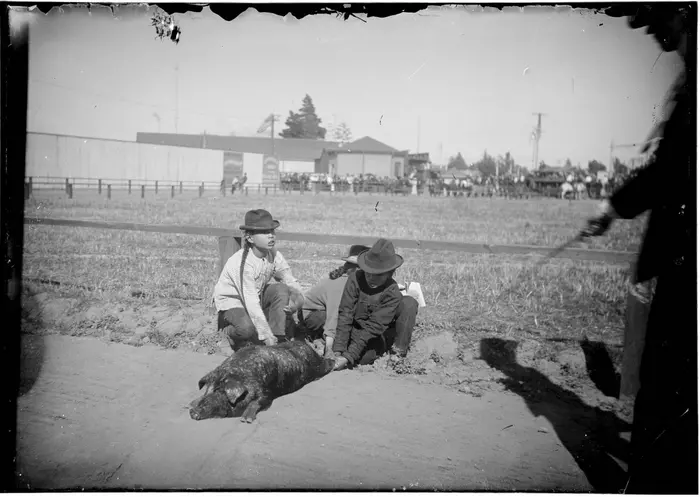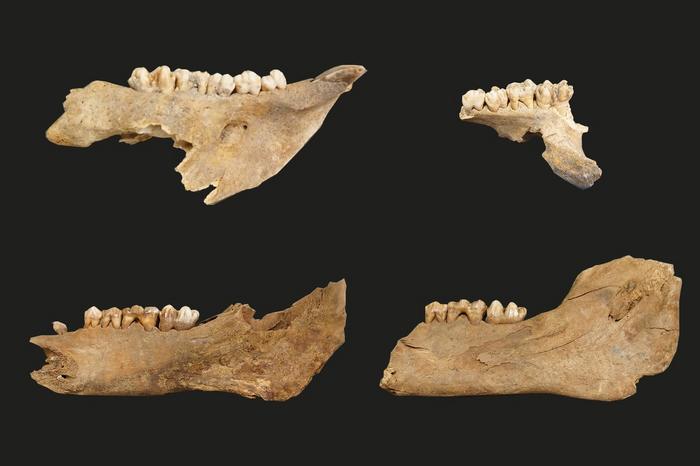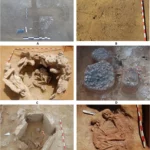How Chinese migrants in Los Angeles Chinatown gained self-reliance
Study shows early migrants overcame economic barriers by raising pigs.

In the late 1800s and early 1900s, anti-Chinese sentiment in the United States was high, as working-class laborers in the country viewed Chinese workers as a threat.
Prior research has found that during that period, approximately 400,000 Chinese migrants came to the U.S., many of whom went to California to build the Transcontinental Railroad. Following the project’s completion, competition for jobs grew tougher, and passage of the Chinese Exclusion Act in 1882 banned Chinese laborers from immigrating to the U.S.
But in Los Angeles Chinatown, Chinese migrants established a work-around to the racist policies, forging their own economy through pig raising and pork distribution, according to recent research. The study, which made the cover story of the January 2024 issue of American Antiquity, reports on the resilience and self-reliance of Chinese migrants “under structural racism.”

“Our research revealed some basic discrepancies between the archaeological data and mainstream historical narratives,” says lead author Jiajing Wang, an assistant professor of anthropology at Dartmouth.
“What has been recorded in historical narratives was written by the people in power, so the records don’t say much about the real-life struggles of early Chinese migrants.”
“So, archaeology contributes to that picture because we are recovering material remains that record the everyday life of people who normally would not have had a voice in public records,” says Wang.
Wang co-authored the study with historical archaeologist Laura Wai Ng, an assistant professor of anthropology at Grinnell College, whose research for the paper focused on the historical and archaeological background of Los Angeles Chinatown, and Tamara Serrao-Leiva, chief deputy and curator of anthropology at the San Bernardino County Museum, who provided them with access to the materials.
The study emerged as an offshoot from another project. The team had been working with artifacts from what is now referred to as Old Chinatown in Los Angeles which had been obtained in the 1980s, during an excavation led by Robert Greenwood, as part of the construction of the Los Angeles Metro Rail at Union Station. While examining the materials now housed at the county museum, they randomly discovered some boxes of pig bones. Wang, an anthropological archaeologist, whose research focuses on the origins of agriculture and ancient foodways, noticed their dirty teeth and knew that she could do something with them.
By analyzing the dental calculus on the pig teeth, which forms when food residue and saliva react to each other to form a mineralized plaque, the team could obtain a good record of the pigs’ diet.
The microfossil analysis of 10 pig specimens’ teeth revealed phytoliths, aka fossilized plant residue, and parasite eggs. The microparticles of food showed that seven of the 10 pigs had been eating a lot of rice—rice leaves and rice husks. Rice was predominant in the pigs’ diet, as only two pigs showed evidence that they had eaten grasses such as barley or wheat. The eggs of Ascaris roundworm, a parasite which can enter a pig’s digestive tract through consumption of animal and human feces or soil containing the eggs, were also detected in the specimens. In addition, the researchers analyzed two pig rib bones recovered from the same archaeological contexts, which served as controls to ensure that the sample had not been contaminated.
As the study reports, the team knew from their research involving old newspaper archives that white hog farmers in California used barley and wheat, not rice, to feed their pigs. Pork was also sourced from the Midwest; however, in Chicago, pigs were fed corn.
At least four Chinese-owned butcher shops had been documented in the area according to Ng’s research on Chinese Exclusion Act case files and other archival records. Chinese butchers would enter into partnerships with other workers to qualify as “merchants,” which made them exempt from the Chinese Exclusion Act. The historical records also show that the butcher shops provided banking and other services.
The team compared their results to what is known about pig husbandry practices in China, especially South China where these immigrants came from, and found that the practices were quite similar.
In South China, pigs were fed leftover food, rice bran—a rice byproduct, and rice leaves, as part of their diet. Archival records document that some Chinese individuals were growing rice in northern California in the early 1900s, illustrating that there may have been a network between the Chinese persons who were growing rice and raising pigs.
Earlier research has found that the majority of pig bones found in Los Angeles Chinatown were from the less-prized part of the pig, demonstrating that the more expensive cuts were probably sold outside the area while the cheaper cuts were eaten by the Chinese migrants who were raising the pigs.
“The archaeological data shows that Chinese migrants had been getting their own food, growing rice and raising pigs, and maintaining their traditions, despite the racist environment,” says Wang.
“With fresh pork, they had created a self-reliant food system and network that provided jobs, banking, housing, and immigration services to the community,” says Ng.
To explore this work further, the team has another project underway which is analyzing how food practices have changed before, during, and after immigration from China to the U.S.
Bibliographic information:
Self-Reliance and Pig Husbandry in Los Angeles Chinatown (1880–1933): New Evidence from Dental Calculus Analysis and Historical Records, American Antiquity (1-Jan-2024), DOI: 10.1017/aaq.2023.79
Press release from Dartmouth College.


